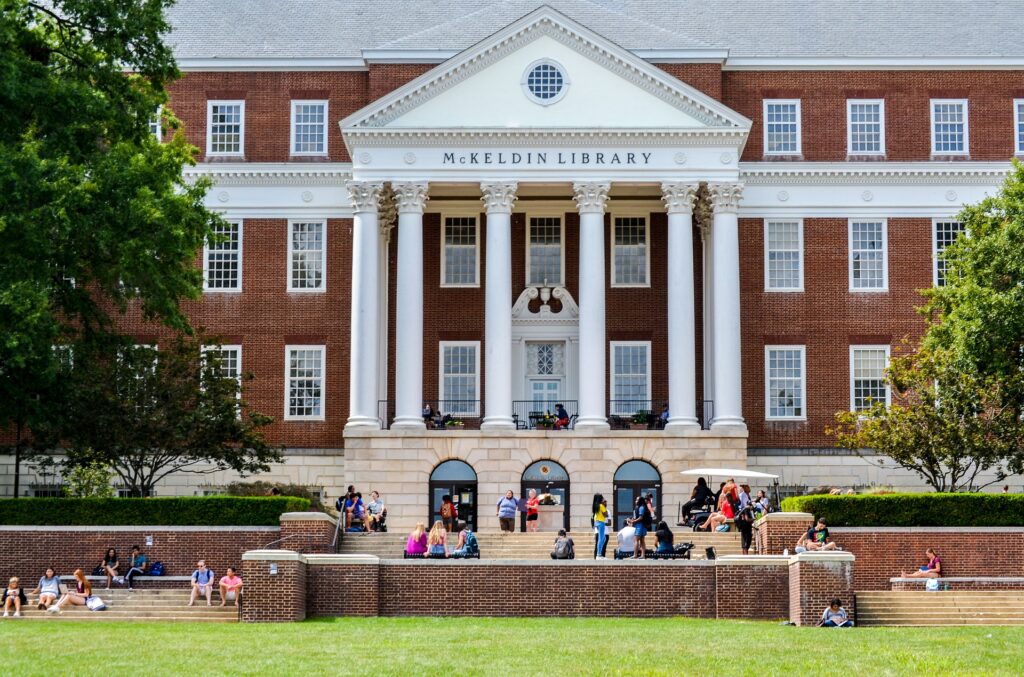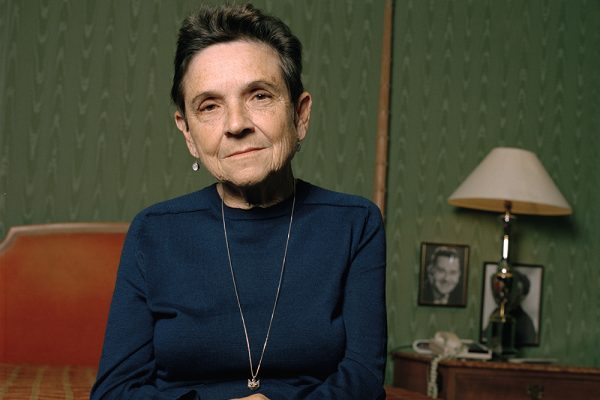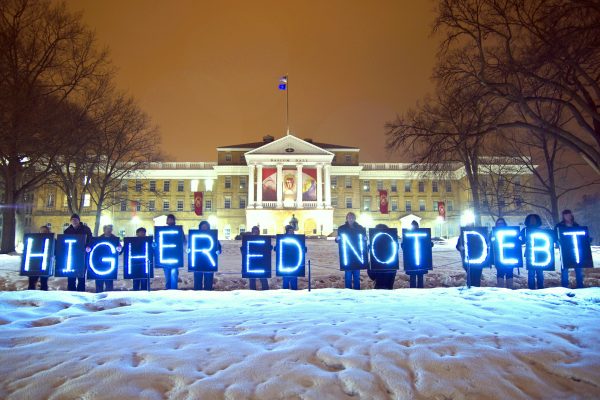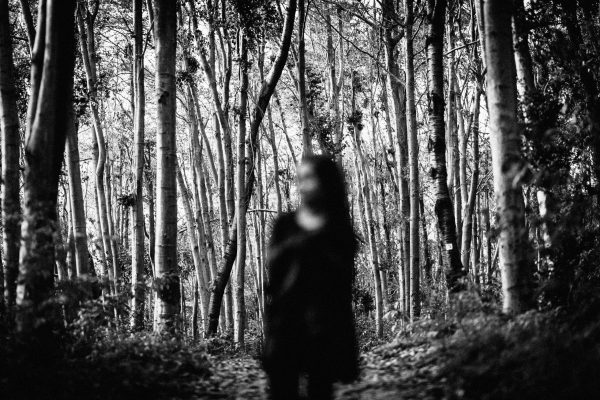The Education Trap: Schools and the Remaking of Inequality in Boston
Cristina Viviana Groeger
Harvard University Press, $35 (cloth)
Let’s Be Reasonable: A Conservative Case for Liberal Education
Jonathan Marks
Princeton University Press, $27.95 (cloth)
The politics of higher education are changing.
For decades the basic arrangement has had ascendant conservatives arrayed against it and liberals engaged in a defensive rearguard action. The rightwing onslaught was spearheaded by the likes of William F. Buckley, whose God and Man at Yale (1951) decried the secularization of an elite institution overrun by Keynesians and collectivists. The onslaught endured through the end of the twentieth century in the work of people like Allan Bloom, whose 1987 best-seller The Closing of the American Mind—a broadside in the so-called canon wars—deplored the rise of “relativism” on campus and the sidelining of great ideas by works by scholars from historically marginalized groups, supposedly promoted in the academy due to political trendiness rather than merit.
Both books were, in the manner of their times, part of an anti-intellectual and anti-academic red scare that weaponized reactionary notions of who belongs in the academy and who doesn’t. Meanwhile, it was Ronald Reagan’s education secretary, William Bennett, who hypothesized that tuition rose because of increasing federal student aid—casting universities as villains that feed off both taxpayers and their own students. The debate over higher education throughout this period mirrored attitudes toward intellectualism in general—since, it was assumed, the academy was where the intellectuals were to be found. Buckley, for his part, gleefully declared that he would rather be ruled by the first two thousand people in the Boston telephone directory than by the Harvard faculty.
Given this ideological arrangement, it is no surprise that liberals—including those who help to formulate higher ed policy—have long embraced claims that a college degree “pays off” in the form of higher earnings and better career opportunities. After all, this view allows them to defend their commitments in terms that might appeal to conservatives: higher education is good for the economy, this messaging goes, not for namby-pamby reasons like scholarship for its own sake or for broader societal transformation. One product of such thinking is The Race between Education and Technology by Claudia Goldin and Lawrence Katz, who couch the argument for higher education in the language of human capital—portraying it as an engine of both individual economic improvement and macroeconomic growth.
But it is also not surprising that a younger generation of left intellectuals has turned against higher education, given that it has turned against them. Following years of austerity budgets and the systematic deprofessionalization of academic labor, millennials and their generational successors have found it harder and harder to get faculty positions. As for students, a college degree of some sort has become a near-universal standard for younger cohorts entering an increasingly credentialized labor market. For them, the university has meant neither an enriching intellectual experience that sets them on a path of humanistic, lifelong inquiry nor a path to middle-class economic stability, but rather escalating tuition for degrees of questionable value that sets them on a path of crushing, lifelong debt. Once popular on the right, the Bennett hypothesis is likely to find more and more of its adherents on the left.
Alongside this left turn away from higher education has been a newfound conservative appreciation for it, couched in a critique of college campuses as sites of elite liberalism and social justice warriors run amok. According to this narrative, the values of free and open discourse, passionate debate, and the “marketplace of ideas” have been shut down by liberal scolds and race-conscious administrators beholden to woke ideology, and it is up to conservatives to resurrect them.
Two new books, Cristina Viviana Groeger’s The Education Trap and Jonathan Marks’s Let’s Be Reasonable, illustrate this changing polarity. The former is primarily a work of history about the restructuring of education at the secondary and post-secondary levels in Boston during the Gilded Age and Progressive Era. Let’s Be Reasonable is more personal and polemical—the factually untethered musings of a conservative professor at a liberal arts college on the demise of reasonability in an academy beholden to a small but culturally hegemonic left. Taken together, the two volumes exemplify the shifting ideological valence of higher education in 2021.
Groeger’s book covers the beginning of the high school movement, the era during the early twentieth century when secondary schooling spread across the United States. It draws on a remarkable breadth of sources, from ethnographies and interviews to public directories, the full-sample decennial censuses made public relatively recently, and other statistical sources. The thesis is stated upfront. “Education became a central means of social mobility,” Groeger argues, “at the same moment that it became a new infrastructure for legitimizing social inequality. While providing economic opportunities to some workers, the expansion of schooling actually undercut the power of others.”
The high school movement was the social process by which attendance at and graduation from secondary school became universal (or nearly universal) among native-born Americans. The transformation is conventionally dated from 1910 or so (though Groeger shows it started earlier in Boston), when the graduation rate in the relevant age cohort was less than 10 percent. By 1950 the graduation rate had grown to over 50 percent, and attendance was nearing universality outside the segregated South. Graduation rates continued to increase in subsequent decades in the process of desegregation and the enfranchisement of southern Black communities. Nearly every school district came to offer some form of secondary schooling over that time period, though it took time for what we now conceive as a public high school education to become standardized. One striking feature of this transformation is that it was decentralized. No federal program sought to bring about universal secondary education; rather the impetus came from local status competition for what counted as a complete education expected of local children and young adults, operating in combination with unemployment crises and sectoral transformations that removed children from the labor force.
The Education Trap is usefully understood in reference to The Race between Education and Technology, which treats the high school movement as an episode of forward-thinking public improvement from the ground up, a civic-minded provision of secondary education as a public good in response to the demands of “technological change.” Groeger’s narrative complicates this picture by introducing class conflict. It studies who exactly availed themselves of new opportunities, foregrounding the way class patterns of formal and informal education help to explain contemporaneous socialization into occupational and status hierarchies. The result is a more complete and convincing picture of the high school movement than Goldin and Katz’s, one that punctures the central conceit of liberal educational philosophy in the late twentieth century. Far from reducing socioeconomic inequality, more widespread formal education actually solidified it under the rising tide of corporate capitalism.
Each chapter of the book focuses on a particular class, tracing its relationship to the shifting structures of education and work. Organized craft workers, for instance, avoided formal vocational education outside the workplace, perceiving it as an employer-backed threat to their control over apprenticeships—and thereby over entry into the ranks. Craft unions didn’t want their ability to withhold skilled labor undermined by strikebreakers trained through mechanisms outside their control. Moreover, vocational education that would actually prepare workers for such jobs was and always has been prohibitively expensive. Goldin and Katz treat the lagging high school enrollment patterns of men and boys in industrialized regions as a puzzle amid the larger trend of rising high school enrollment and graduation rates in the early twentieth century. Groeger solves the puzzle by pointing out that formal education was not the accepted route into industrial occupations.
Feminized domestic labor likewise resisted the introduction of formalized “training” for jobs where none had previously existed, exasperating progressive do-gooders who thought that such schemes as “Schools of Housekeeping” would empower the poor and downtrodden to enter the professional classes and avoid prostitution. In fact, this training was viewed as inconvenient, irrelevant, and unnecessary—if not a further exploitation at the hands of employers (say, when unpaid work was required for “certification”). The reformers read this hostility as either a congenital disinclination to education or complacency. The 1895 annual report of the Women’s Educational and Industrial Union declared, “The competent general housework girl is practically a thing of the past. . . . The demand for household servants is greater than the supply, thus giving little incentive to maids to become really skilled in their work.” What the organization interpreted as an excess of demand over supply was in fact the reluctance of domestic workers to respond to the WEIU’s own placement services even as they were besieged by would-be employers of domestic labor enthusiastic to have an outside organization exist for the purpose of certifying applicants as biddable. These reactions exemplify the limits of formalized education to change work conditions in occupations with a clear gendered division of labor and norms around who can attain the job and how.
Groeger’s analysis is most interesting in relation to three other classes that were just coming into being during this period and were characterized in relation to formal education: white-collar clerical and retail workers, liberal professions (such as teaching and school administration, as well as the law), and new corporate managers and executives.
The corporate transformation of the economy during this era created an abundance of occupations in the first group: telephone operators, secretaries, clerks, bookkeepers, and the like. Their ranks were filled by women and the first native-born generations in immigrant families. These workers welcomed the new educational opportunities, perceiving them as entryways into the American mainstream and a means of economic improvement. When juxtaposed with the wariness of more established communities and workers, this pattern illustrates a crucial lesson: education was embraced by those for whom it was useful and avoided by those who (rightly) perceived it as a threat. There is thus no simple “education is good” conclusion to be drawn here.
By the beginning of the twentieth century Boston had a raft of proprietary options for secondary education like the Burdett College of Business and Shorthand and the School of Successful Salesmanship. These schools conducted business based on their reputation for securing employment for their graduates—or at least claiming to do so. The parallels between these institutions and the for-profit colleges of today are striking, providing another corrective to those of us who have embraced the high school movement as testament to the superiority of public goods over private, discriminatory, and often fraudulent institutions. Groeger even mentions the imprisonment of the School of Successful Salesmanship’s proprietor for fraud—an example that won’t be lost on readers who recall that predatory lending at for-profit universities in our own day has suffered little consequence. Eventually, the demand for the kind of education offered in proprietary institutions, combined with the institutions’ questionable practices, led the city to open and expand existing public high schools.
Locals further demanded that the growing school system hire graduates of Boston’s teaching colleges rather than out-of-towners. This move was part of a push to create a public university (with attendant degree-granting and certification powers) open to immigrants and their families, an effort that was repeatedly blocked by existing private colleges and their powerful allies in the legislature. Instead, private colleges established schools of education to professionalize education itself, creating a gendered division of labor within that expanding sector. The teachers employed in the new secondary schools were mostly women but their principals, superintendents, and the social scientists studying them—trained at Harvard’s Graduate School of Education—were all men.
Finally, prior to this period, the route to a senior position in a Boston merchant or banking house would have been through a de facto apprenticeship as a clerk. The new corporate economy filled these jobs with second-generation immigrants and women, at the same time denying them a path to promotion into management. Instead, management training happened at Harvard College, which repurposed the bachelor of arts degree toward what we now conceive as a general liberal arts education in order to create an impermeable class and gender boundary between the graduates of public high schools and the college graduates who became their bosses. Under its president Charles Eliot, Harvard created an elective system in order that a student “develops and increases his own powers, and gains command of those powers.”
Its graduates moved seamlessly into industry, equipped with a liberal education that differentiated them from the new masses of white-collar workers—all with the help of the school’s cultivated alumni network. College education thus became a useful marker of who belonged in corporate management, shielding the ruling class from threats to its hegemony posed by new employment opportunities further down the occupational hierarchy. As Groeger summarizes, “The reconstruction of economic opportunity on the basis of education created a new institutional and ideological infrastructure for upholding socioeconomic inequality.” The upshot of this important analysis is that the idealized liberal college education espoused as a timeless principle today was a recent and historically contingent construction, one that served to undermine rather than promote social mobility.
None of this makes it into Let’s Be Reasonable, which tries to take the history and politics out of higher education at the same time that it issues an explicitly conservative call to action for a conservative audience to take up arms in its defense. Erasing the actual social conditions in which college education operates, Marks instead sees timeless principles of “reason” under threat from social justice warriors dead set on undermining once-great institutions. John Locke is the guiding spirit, set up in opposition to what universities have supposedly become. “Universities, as if bored with what they call ‘critical thinking,’” he writes in the first chapter, “have unfurled a multitude of other banners sporting other terms: diversity, empathy, world citizenship, civic engagement, and so on.”
The book consists of an episodic and polemical recounting of controversies on campus over the past decade, from politically correct placemats at Harvard dining halls to the policing of micro-aggressions. It joins a long tradition of conservative outrage, from Buckley and Bloom to James Buchanan and Nicos Devletoglou’s Academia in Anarchy (1970) and the latest Substack screed about cancel culture’s newest victim. Marks positions himself against what he calls the conservative movement’s anti-intellectual attack on higher education—especially that of the so-called paleocons. Take Michael Anton, author of “The Flight 93 Election” manifesto, which claimed that universities are “wholly corrupt” and operate in service to a leftist globalist junta, to whom the conservative intellectual establishment is uncomfortably close and thereby compromised. Marks defines himself against this brand of conservatism, apparently to claim the middle ground, but he also indulges the notion that leftist professors are indoctrinating the children of nice conservative families with poisonous ideas.
Despite the polemicism, it is evident that Marks cares greatly for his students and for the work of teaching and scholarship. One gets the feeling that he is justifying his life’s work within the ivory tower to himself and to an audience that he considers his peers (professional, think tank, movement conservative types). But a central flaw of the book is its deeply distorted representation of college students—a consequence, perhaps, of extrapolating too much from his own career spent teaching humanities in small liberal arts colleges (though I doubt his portrayal is even true of students there). Like much popular coverage of the higher education landscape, Let’s Be Reasonable focuses on the wealthiest institutions, those that tend to house the most privileged students. His portrait of college students makes them out to be naïve, young adults, with opinions easily manipulated by professors—an infantilization starkly out of touch with the realities of higher education today.
To begin with, the vast majority of students do not attend elite schools or small liberal arts colleges. At the 32,000–student state flagship where I teach, undergraduates come to class knowing more about the world than I did when I was in college, but on the other hand, they evidently don’t know one another terribly well despite taking advanced coursework in the same major, likely because many have families and jobs and most live off campus.
Beyond these demographic misrepresentations, you also won’t learn from Marks’s book, which acts as though college campuses are conservative-free spaces, that there already is a very well organized conservative presence on them today: the far-right, white supremacist, and misogynistic “incel” cultures Talia Lavin writes at length about in Culture Warlords (2020), the part of the conservative movement that actually has representation among the young. For all their careful cultivation, the Young Republican types Marks and so many other conservative writers on higher education conceptualize as principled cultural conservatives—samizdat George Wills—don’t exist. The ones who are portrayed that way dispense with the costume in the privacy of anonymous online chat forums for purer expressions of alt right beliefs. One could imagine a more broadly appealing working-class cultural conservatism that would hold up expensive, exploitative universities as elite liberal villains; that seems to be where Marks wants to go. The problem is that the constituency for such a political tendency probably wouldn’t identify itself as a student movement. And in any case, that is absolutely not what Marks is offering. His target is not the reality of academia but a conservative caricature of it.
As a result, Marks glosses over the question of where power really lies in neoliberalized higher ed institutions. The people in charge aren’t the hectoring campus radicals but administrators selected and elevated through close relations with outside funders, alumni philanthropists, federal research agencies, private sector “partners,” gargantuan university health systems, and state legislators. Yet still Marks sees only a leftist assault. “The left is so embedded not only at left-branded places like Oberlin and Berkeley,” he writes, “but also at ‘Grandees R Us’ Harvard, that one no longer needs student activists and radical professors with imposing beards to march around and demand things.”
Demanding things, needless to say, is not the same as getting them. Just consider the demands made of Harvard’s current president, Lawrence Bacow, that have gone unheeded. Universities today are exactly the same as any other institution in contemporary U.S. life—which is to say, places where power hierarchies are increasingly oppressive and where those sitting at the top have learned how to use egalitarian language while they do everything in their power to perpetuate the very power imbalance that they decry. Meanwhile, university administrators and senior officials at the Department of Education have proven quite willing to indulge conservative demands to marginalize Palestinian solidarity movements on campus at the behest of Zionist activists and the institutions backing them.
A further signal of where power truly lies in neoliberal academia can be found in Marks’s admission that his colleagues have rarely treated him unprofessionally due to his outspoken conservative identity as a scholar. By contrast, as an outspoken leftist economist, I am treated unprofessionally by my colleagues all the time—despite 70 percent of the profession identifying as a Democrat (at least as far as these things can be measured). The department where I teach has also been targeted by conservative philanthropic interests, who have in some cases gained the sympathetic ear of university administrators.
“Since liberals vastly outnumber conservatives in academia,” Marks writes, “conservatives must be bearing the brunt of whatever political discrimination may be occurring there.” In economics, at least, this latter claim is flatly false, and it probably isn’t true in other disciplines either. Conservatives may not be numerous in some places on campus, but that doesn’t mean they’re discriminated against. They enjoy power enough not to be treated unprofessionally precisely because of the mechanisms that exist to protect and promote them, punish their supposed tormentors, and defund anyplace that might make it possible for their antagonists to earn a living. Meanwhile, Marks’s vision of left power on campus has never been an accurate assessment of U.S. higher education—not when Buchanan laid it out in similarly colorful language in 1970 following high-visibility campus upheavals and the vast expansion of publicly funded state university systems to educate the Baby Boomers, and certainly not now.
Perhaps most tellingly, the book is also in some cases straightforwardly self-contradictory. Marks’s gratuitous attack on the Boycott, Divestment, Sanctions movement conflicts with the book’s overarching plea for free speech and liberal discourse. In this move we see how the elitist notion of a liberal education, whether in the era Groeger writes about or today, is weaponized by the right to beat down claims to social equality. The conservative fantasy of the campus as a mythical space of open discourse and reasoned argument is defined most of all by who doesn’t get to take part.
For decades the received wisdom in higher education policy circles has been rooted in the theory of human capital. In that light, five or ten years ago Marks’s argument might have appeared as a relatively innocuous backward-looking paean to a golden age of liberal education outside a market logic. But now it seems like Marks is pointing the way forward. He marshals a number of thinkers, organizations, and statements that he considers himself in solidarity with, from the Foundation for Individual Rights in Education and its embrace of the so-called “Chicago principles” (essentially a protest against campus political correctness, exemplified in a letter issued by the dean of students at the University of Chicago in 2016 as a warning to incoming freshman but evidently aimed more at garnering applause from concerned alumni) to Heterodox Academy (Jonathan Haidt’s project to protect professors from student blowback for expressing views supposedly unfashionable with campus PC culture). All of this infrastructure, like Marks’s book itself, bears the mark of the Charles Koch Institute’s funding or “partnership.” Marks acknowledges right up front that he received “generous financial support” from the Koch Foundation and its offshoot, the Institute for Humane Studies—known for harboring anonymous members of the online far right.
In this respect, Marks’s book is quite similar to another recent conservative book about higher education (backed by the same funders), despite coming to what appears to be a starkly different conclusion. Bryan Caplan’s The Case Against Education: Why the Education System is a Waste of Time and Money (2018) pours scorn on the idea that near-universal higher education does society any good. Caplan’s effort is primarily concerned with returning to a world in which higher education is far from universal—and so, in its way, is Marks’s. As the meritocratic model of what higher education is for comes under more and more pressure in light of its evident failures, these offerings tell us what the conservative response will be: raise the drawbridge, keep out the rabble.








